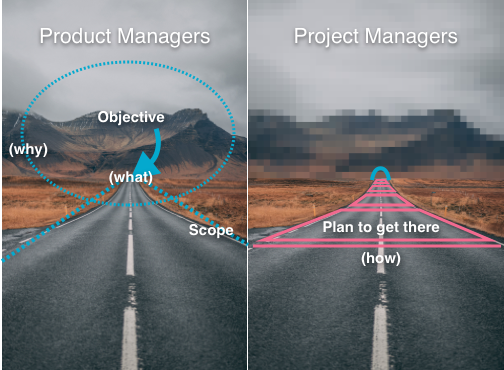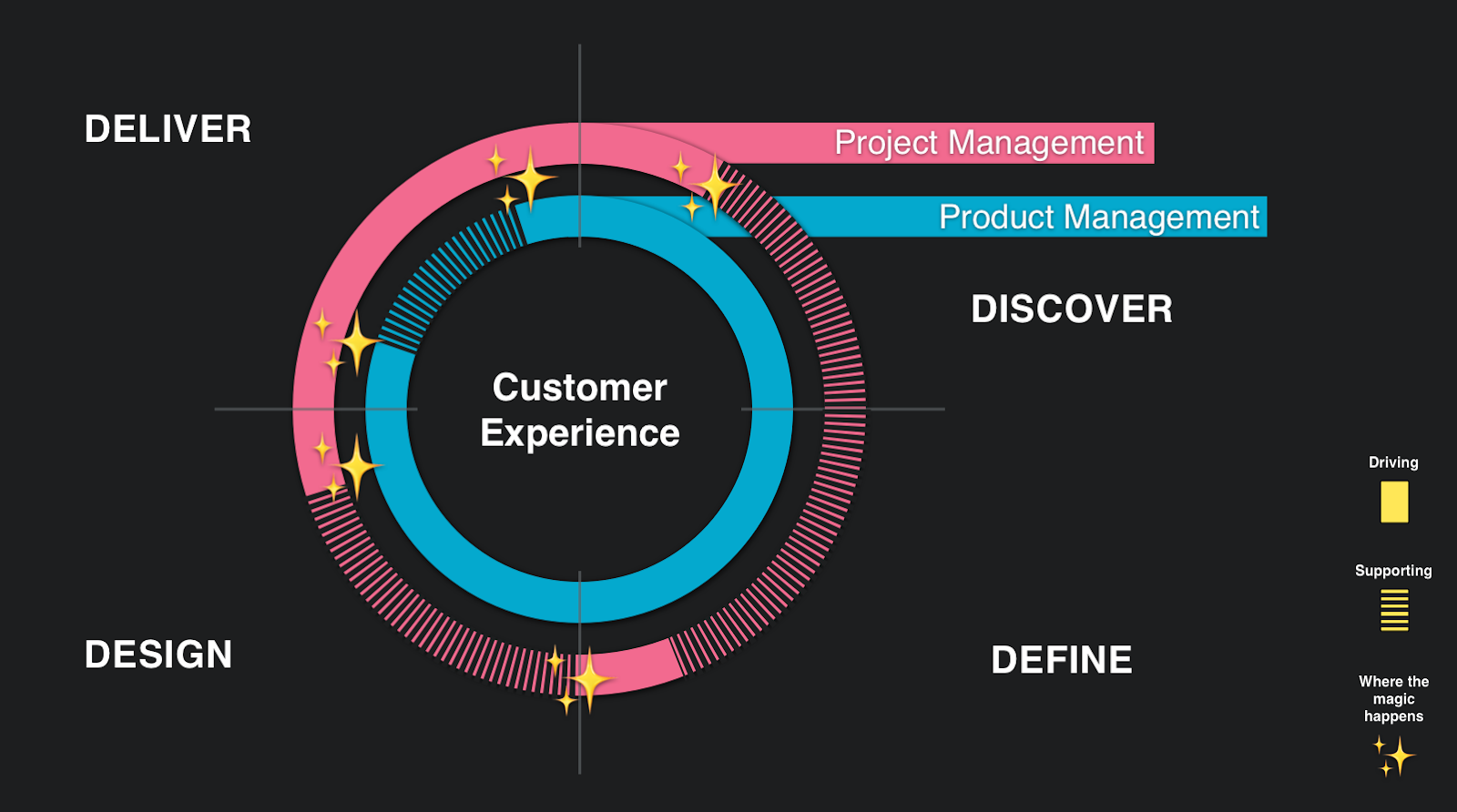Product and Project Managers: Two Great Tastes That Taste Great Together
So you've got this crazy great idea, but you're not sure whether you need the support of a Project or a Product Manager? Then you're in the right place. We've got the comprehensive guide that'll help explain the differences between the two roles, and the ways they can work together to help you achieve amazing results
Let's first start at looking at what both roles do, and what their differences are. It's easy to confuse them after all—both do start with pro and end with management 🤷♀️. To add to the confusion, it can sometimes feel pretty unclear where the boundaries between the two roles lie:
Who's responsible for prioritizing the work?
What about figuring out in what order to do it?
Who's interviewing customers? What about stakeholders?
It's important to remember that there's a pretty big difference between a project and a product. A product should have a long term horizon, and often doesn't have a defined end in sight. In contrast, a project is always set-up to occupy a temporary period of time. It has a defined start and end which should be planned from the get-go.

While every Product and Project Manager should confirm with their teams the expected roles and responsibilities, we wanted to share this overview of the differences between the two roles. Very loosely, a Product Manager is responsible for the What, the Why, and the big-picture When, while a Project Manager is responsible for the How and the detailed When.
| Product Manager | Project Manager | |
| Goal: | Deliver a product that customers love and which creates value for the business | Build and execute a strategy that is set by the Product Manager or leadership team |
| Tools: | Customer Interviews, surveys, coffee, user segmentation and personas, user journey, summaries of qualitative and quantitative research, coffee, product vision, strategy, press releases, roadmap, and backlogs, user stories, and coffee. | Stakeholder maps, project plans, more reports than BBC News, budgets, resource allocation plans, gantt charts/visual representation of remaining work, and dependency maps. |
| Value: | Clearly explains what we work on and why, brings quantifiable data to discussions, makes sure the customer's voice is heard in discussions with the team & stakeholders. | Clearly explains what should happen and when, raises issues before and as they occur, primarily makes sure the project is not blocked, aids in cross-team collaboration. |
Note that the tools list is by no means exhaustive but rather a glimpse at some of the more common tools and methods used.
What's particularly great is how well these two roles can work together during the Design and Delivery phases to amplify the success of a team. For example:
Project Managers can help Product Managers validate if a desired goal is feasible given the time, budget and quality constraints set forth.
A Product Manager can provide context and evidence to a Project Manager to help get stakeholders onboard with a project and it's timelines.
A Project Manager can bring feedback from stakeholders about their limitations, insights and opinions (not always customers) to a Product Manager so that Product Managers can decide when to cut scope, pivot, or extend the deadline
So back to your crazy idea—do you need help validate that it's a problem worth solving? A Product Manager can absolutely help with that by gathering feedback and applying the 4D model to the problem. If on the other hand you just need somebody to work with you and figure out HOW to get something done, that's where a Project Manager can lend their expertise.
If you're using the 4D model, the below illustration should help you visualize where the two roles can best help you:

Both roles are important to the work we do at Zalando, and it's likely that at some point you'll have to dip your toes into a part of either role. You might be asked to seek feedback from customers or track engagement with a feature. Or maybe you're responsible for creating a project plan for an upcoming feature release and following up with customers to roll it out. Either way, it will only help you to have a basic understanding of both roles.
To that end, we'd like to leave you with some light reading material that we hope will shed more light on each role, as well as the difference between them: The Difference Between a Project and Product Manager, Explained in 500 Words or Less (Sophia Bernazzani, Dec 17 2018)



